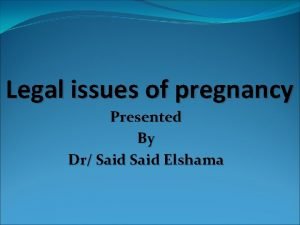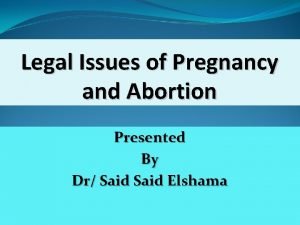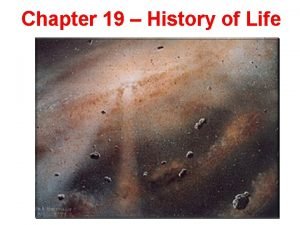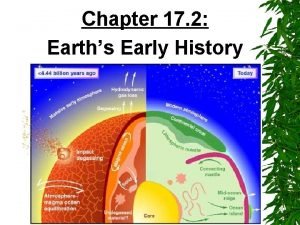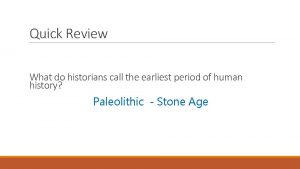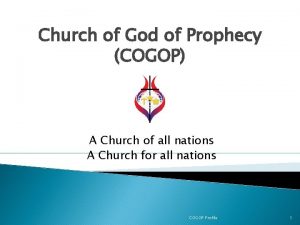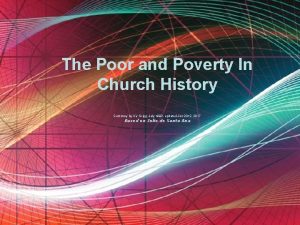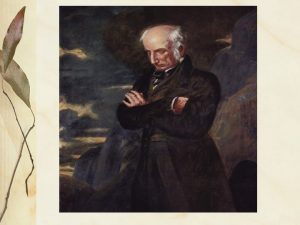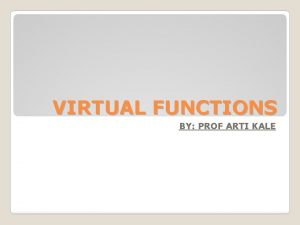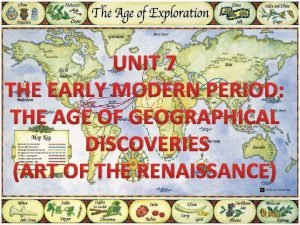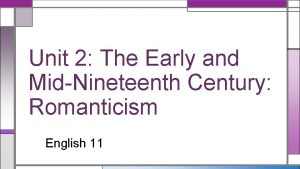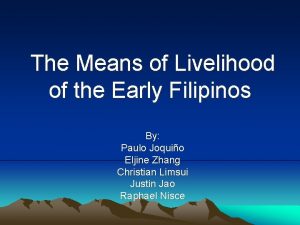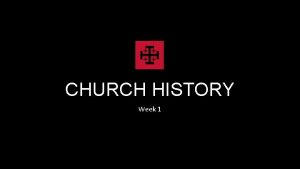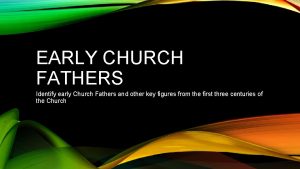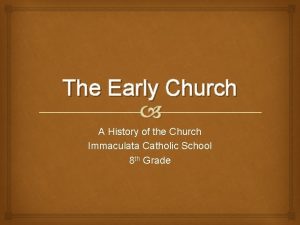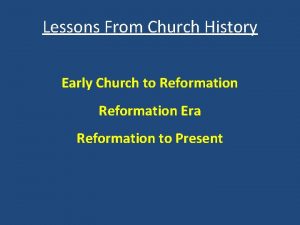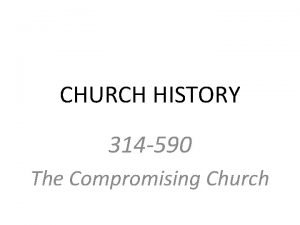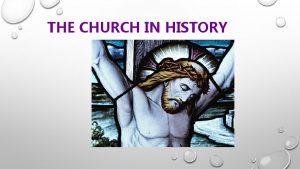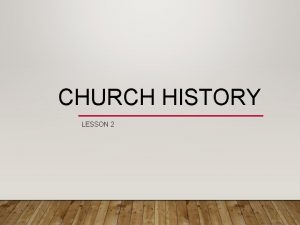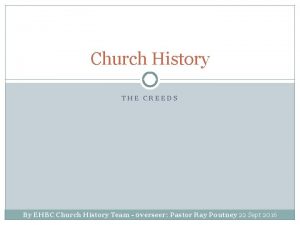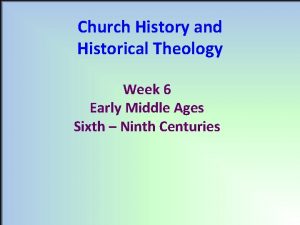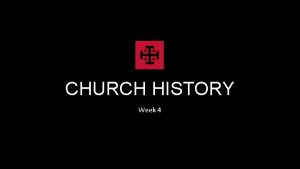CHURCH HISTORY Week 2 Week 1 Early Church


![THE MEDIEVAL CHURCH [ 529 AD – 1517 AD ] THE MEDIEVAL CHURCH [ 529 AD – 1517 AD ]](https://slidetodoc.com/presentation_image/10254fd7fc0c44f316ca38a3d0c03bb0/image-3.jpg)






























- Slides: 33

CHURCH HISTORY Week 2

Week 1: Early Church (70 – 529) Week 2: The Medieval Church (529 – 1517) Week 3: The Reformation (1517 – 1650) Week 4: The Modern Church (1650 – Present)
![THE MEDIEVAL CHURCH 529 AD 1517 AD THE MEDIEVAL CHURCH [ 529 AD – 1517 AD ]](https://slidetodoc.com/presentation_image/10254fd7fc0c44f316ca38a3d0c03bb0/image-3.jpg)
THE MEDIEVAL CHURCH [ 529 AD – 1517 AD ]

REGULA FIDE

regula fide “rule of faith” Refers to the concept that there is a historic tradition regulating orthodox belief to which all Christians have always subscribed. This rule of faith is expressed through creeds and confessions.

Council of Nicea (325; 381) Council of Chalcedon (451) Council of Orange (529)


Vincentian Canon “That which has been believed always, everywhere, and by all. ”

Apostolic Succession The unbroken succession which sustains the orthodox faith through the centuries. Those who fall within this line can trace their teachings back to the Apostles.

Apostolic Succession Catholic Understanding: Succession in person (i. e. Popes and Bishops) Protestant Understanding: Succession in teaching

Regula Fide

RISE OF THE PAPACY

Rise of the Papacy Leo I meets Attila the Hun in 450 A. D.

Rise of the Papacy Leo III crowns Charlemagne on December 25, 800 A. D.

Rise of the Papacy Corruption of the regula fide

Rise of the Papacy Event Year Latin used in prayer and worship imposed by Gregory I 600 Prayers directed to Mary, dead saints, and angels 600 Kissing the pope’s feet began with Pope Constantine 709 Veneration of cross, images, and relics authorized 786 College of Cardinals established 927 Canonization of dead people as saints 995 Attendance at Mass made mandatory 1000 Celibacy of priesthood decreed by Pope Gregory VII 1079 The sale of indulgences established to reduce time in Purgatory 1090 Transubstantiation proclaimed by Pope Innocent 1215 Doctrine of the seven sacraments affirmed 1215 Infallibility of the papacy firmly pushed by Pope John XXII 1324 Tradition claimed equal in authority to the Bible at the Council of Trent 1545 Apocryphal book declared canon by Council of Trent 1546 Medieval

Institutional Church

Rise of the Papacy extra ecclesiam nulla salus “outside the Church there is no salvation”

Rise of the Papacy "We are compelled in virtue of our faith to believe and maintain that there is only one holy Catholic Church, and that one is apostolic. This we firmly believe and profess without qualification. Outside this Church there is no salvation and no remission of sins. . Furthermore, we declare, we proclaim, we define that it is absolutely necessary for salvation that every human creature be subject to the Roman Pontiff. ” -Pope Boniface VIII, Bull Unam sanctam (1302):

THE GREAT SCHISM OF 1054

Five Bishoprics of the Early Church Rome Constantinople Antioch Jerusalem Alexandria The Great Schism 1054 Medieval

Rome Constantinople Antioch Invasion of Islam 612 Jerusalem Alexandria

Rome Constantinople

The Great Schism 1054

The Great Schism 1054

The Great Schism 1054 Reasons for the schism • Rome’s claim to supremacy • Distinction and suppression of language • Distinction in philosophy • Filioque • Atrocities of the Fourth Crusade

The Great Schism 1054 filioque “and the son” Western Church addition to the Nicene Creed at Third Council of Toledo (589; officially 1014) which expressed that the Holy Spirit proceeded from the Father and the Son.

The Great Schism 1054 Fourth Crusade (1202 -1204) Eastern Church called on their brothers in the West to come to their aid as the Muslim invasion was bringing immanent destruction.

The Great Schism 1054 One, Holy, Catholic, Apostolic Church Western Church Eastern Orthodox

ARISTOTLE VS. AQUINAS


Reason vs. Revealed Data Could an intellectual person who held to the reasonable new philosophies retain their faith? In order that men might have knowledge of God, free of doubt and uncertainty it was necessary for divine truth to be delivered to them by way of faith, being told to them as it were, by God himself who cannot lie. – Thomas Aquinas

CHURCH HISTORY Week 2
 Early cpr and early defibrillation can: *
Early cpr and early defibrillation can: * 1 week darkening areola early pregnancy pictures
1 week darkening areola early pregnancy pictures 1 week darkening areola early pregnancy pictures
1 week darkening areola early pregnancy pictures Week by week plans for documenting children's development
Week by week plans for documenting children's development Section 17-2 earth's early history
Section 17-2 earth's early history 17-2 earth's early history
17-2 earth's early history Section 17-2 earth's early history
Section 17-2 earth's early history Colonial williamsburg floral design history
Colonial williamsburg floral design history Early beginnings of tourism
Early beginnings of tourism Middle ages floral design
Middle ages floral design What do historians call the early period of human history
What do historians call the early period of human history Pentecost quiz
Pentecost quiz Logo cogop
Logo cogop History of the church summary
History of the church summary Also history physical
Also history physical Icews
Icews William wordsworth education
William wordsworth education Who is shakespeare
Who is shakespeare Random early drop
Random early drop What is os
What is os Payslay
Payslay Arti kale
Arti kale El valle verde
El valle verde Early modern period dates
Early modern period dates The early and mid-nineteenth century: romanticism
The early and mid-nineteenth century: romanticism Types of early childhood programs
Types of early childhood programs Types of early childhood programs activity a chapter 2
Types of early childhood programs activity a chapter 2 Early mesial shift
Early mesial shift Space coast early steps
Space coast early steps Locust things fall apart
Locust things fall apart Past perfect conditional
Past perfect conditional Livelihood of the early filipinos
Livelihood of the early filipinos Jean baptiste louis gros
Jean baptiste louis gros Early resolution program
Early resolution program

